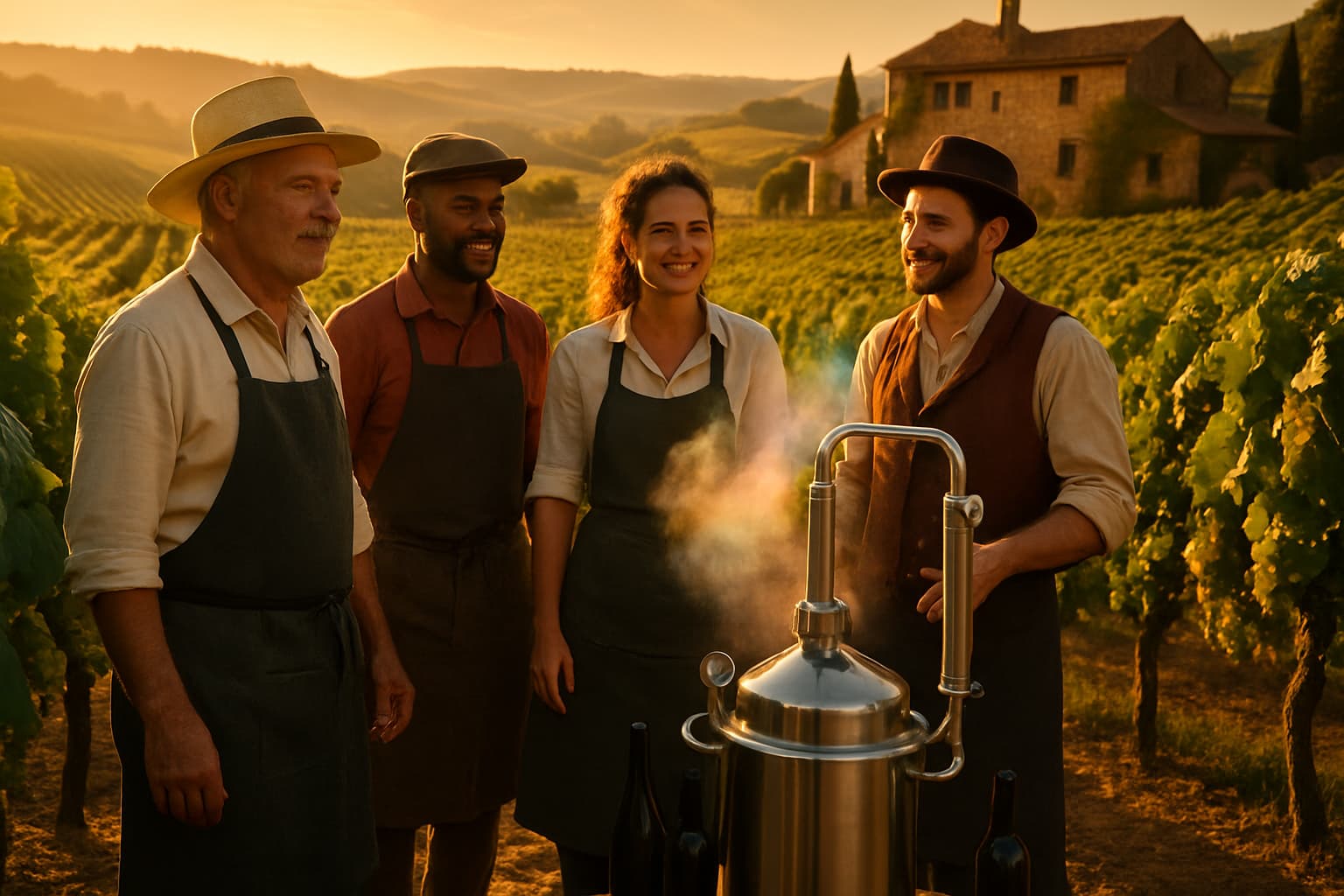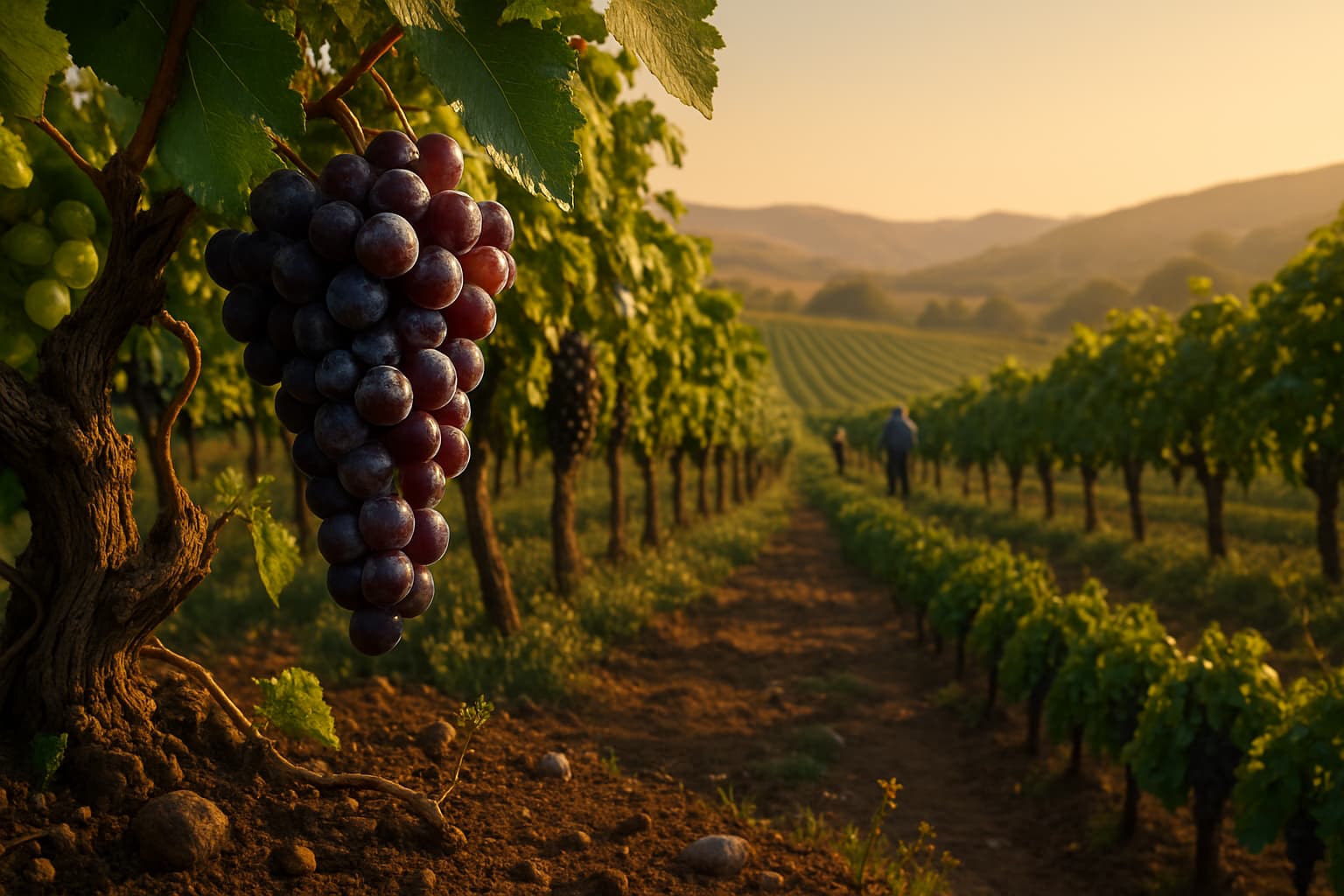Tannins
Tannins are astringent compounds found in wine that contribute to its texture and aging potential, often causing a drying or puckering sensation in the mouth. They are derived from grape skins, seeds, and stems, as well as from oak barrels used during aging.
/ˈtænɪnz/
Examples: Cabernet Sauvignon, known for its high tannin content, often exhibits a firm tannic structure., Nebbiolo grapes, used in Barolo and Barbaresco, produce wines with high tannins that soften with age., Pinot Noir typically has lower tannins, contributing to its silky texture.
Malic acid
Malic acid is a naturally occurring organic acid found in grapes that contributes to the tart, green apple-like flavor and crispness in wine. It plays a significant role in the taste and acidity of wine.
/mælɪk ˈæsɪd/
Examples: A young, unoaked Chardonnay often exhibits high levels of malic acid, contributing to its crisp and tart profile., In cooler climate regions, such as parts of Burgundy, wines may retain more malic acid, enhancing their freshness and acidity., During the winemaking process, a winemaker might decide to block malolactic fermentation in a Sauvignon Blanc to preserve the wine's vibrant malic acidity.
Filtration
Filtration in winemaking is the process of removing solid particles from wine to clarify and stabilize it before bottling, using various types of filters to achieve different levels of clarity and remove unwanted elements like yeast, bacteria, and sediment.
/fɪlˈtreɪʃən/
Examples: Using a diatomaceous earth filter to remove yeast and other particles from red wine before bottling., Employing a membrane filter for sterile filtration to ensure the wine remains free from spoilage organisms., Applying cross-flow filtration to gently clarify white wine without stripping it of flavor and aroma compounds.
Oxidation
Oxidation in wine is a chemical reaction between the wine and oxygen that can change its flavor, aroma, and color. This process can be beneficial or detrimental depending on the extent and context of the exposure.
/ˌɒksɪˈdeɪʃən/
Examples: Controlled oxidation in the production of Sherry, where the wine is intentionally exposed to oxygen to develop its characteristic nutty flavors., The use of micro-oxygenation in red wine production to soften tannins and enhance color stability., The spoilage of an opened bottle of wine left exposed to air, resulting in a flat, vinegar-like taste.
Microclimate
Microclimate refers to the unique climate conditions of a small, specific area within a larger region, significantly influencing grapevine growth and the characteristics of the resulting wine.
/ˈmīkrōˌklīmit/
Examples: The microclimate of the hillside vineyard allows for cooler temperatures and more sunlight exposure, leading to grapes with higher acidity and complex flavors., In the Napa Valley, certain microclimates are known for producing exceptional Cabernet Sauvignon due to the specific temperature and humidity conditions., The use of wind machines in frost-prone microclimates to protect vines from freezing temperatures.


